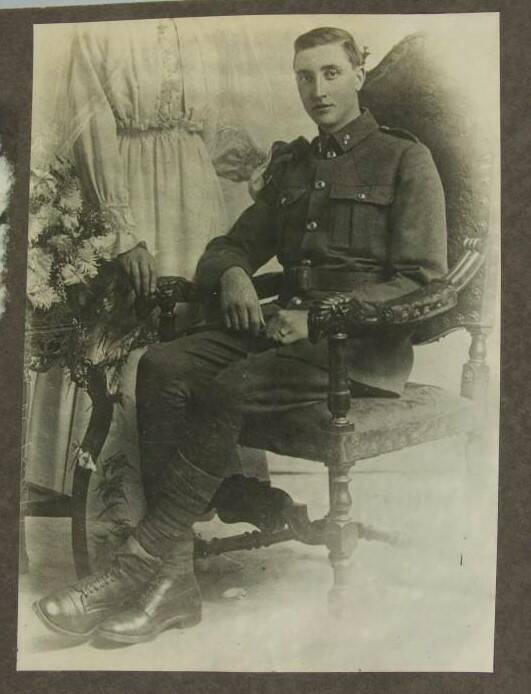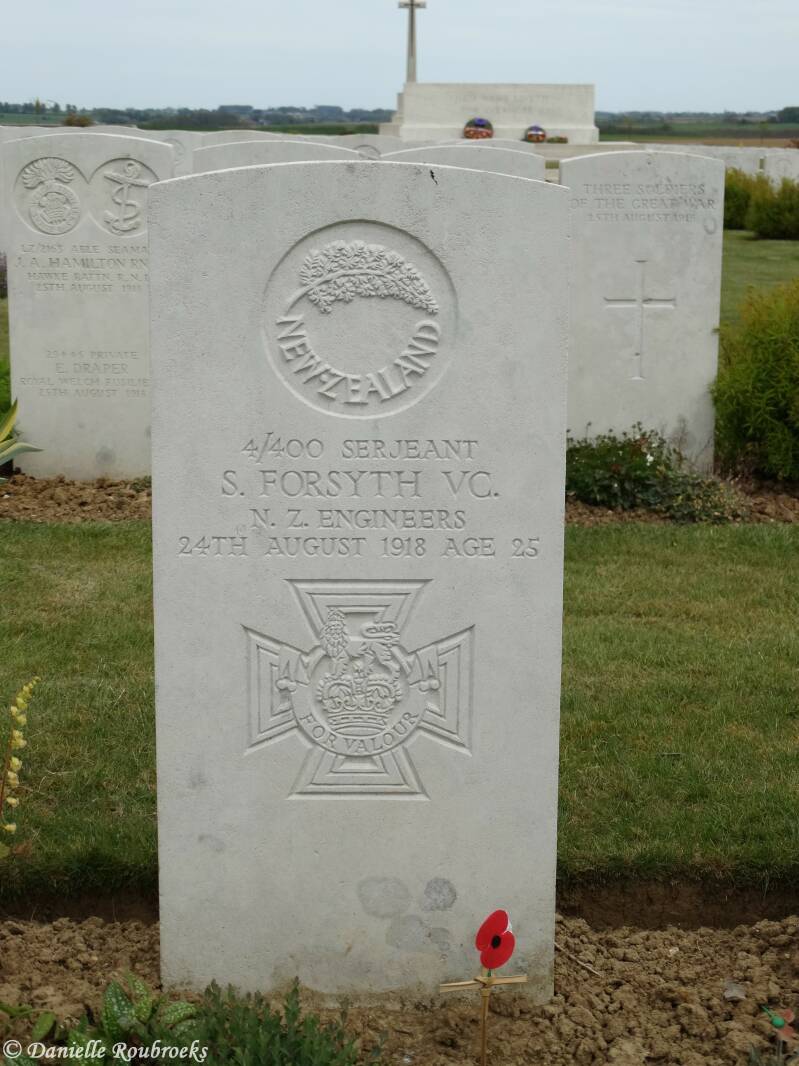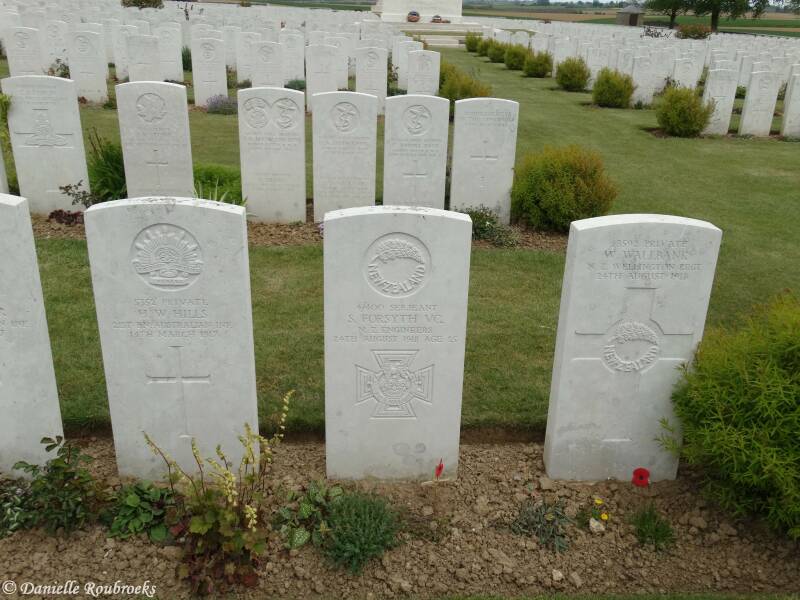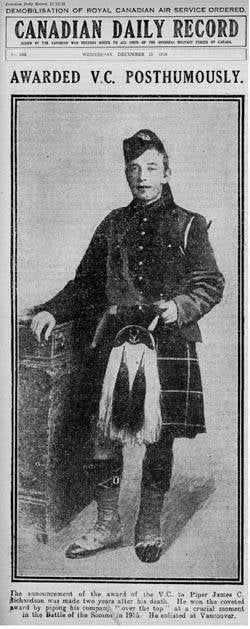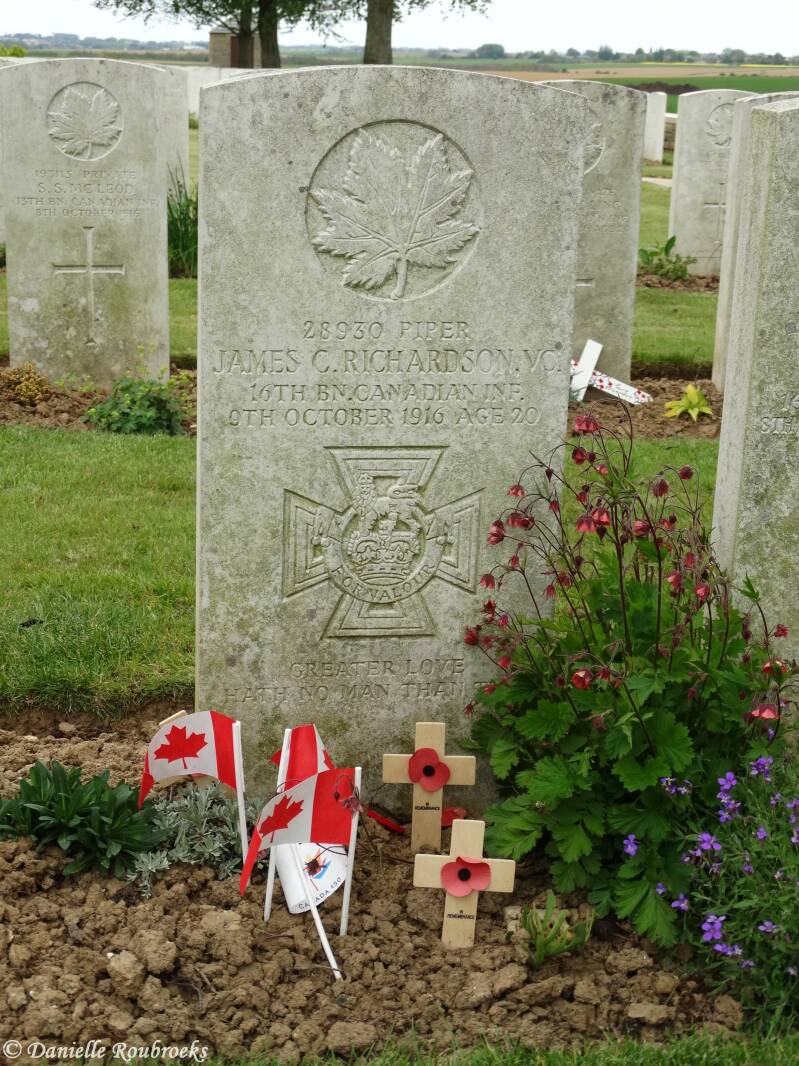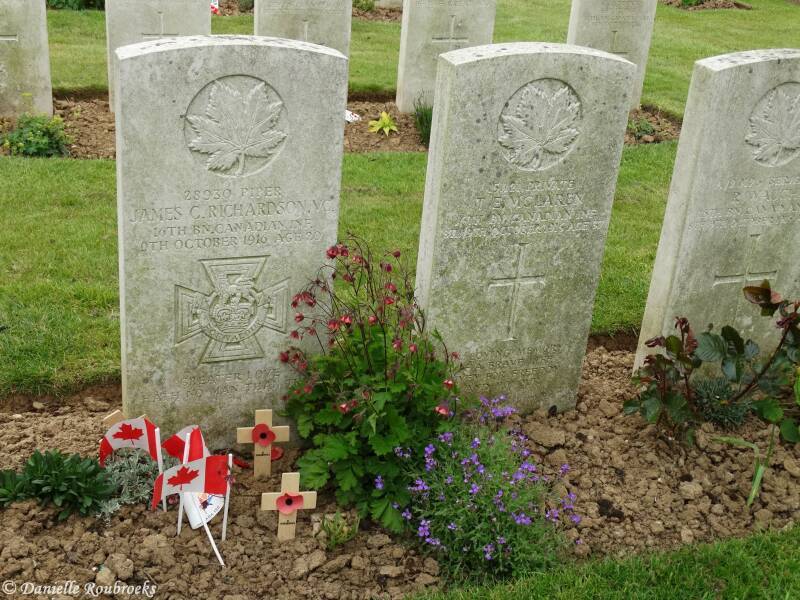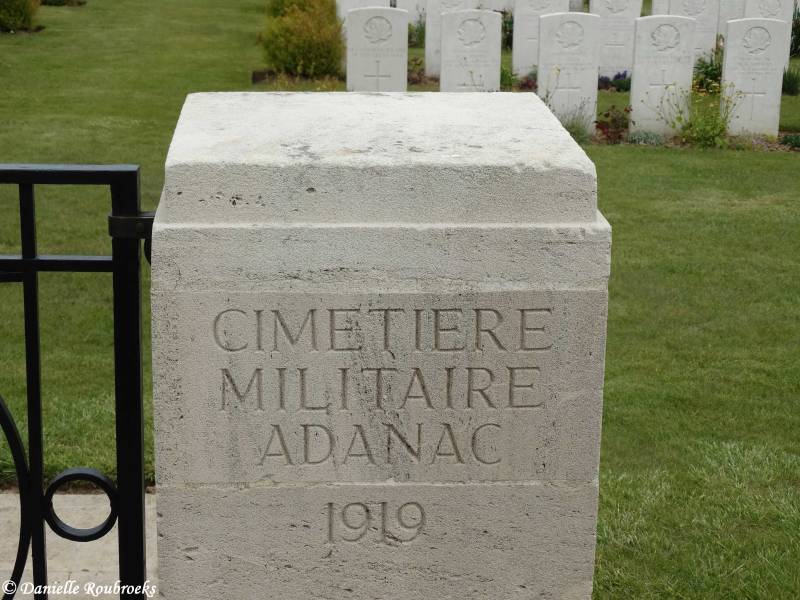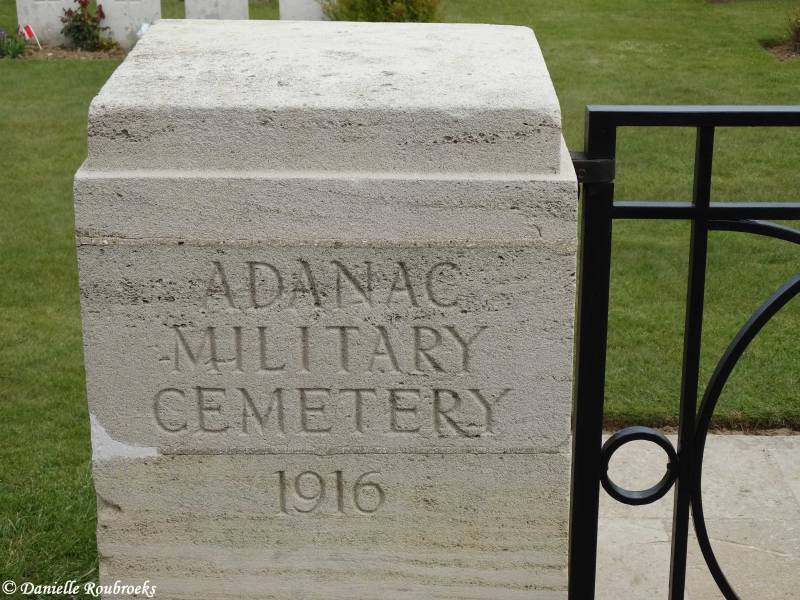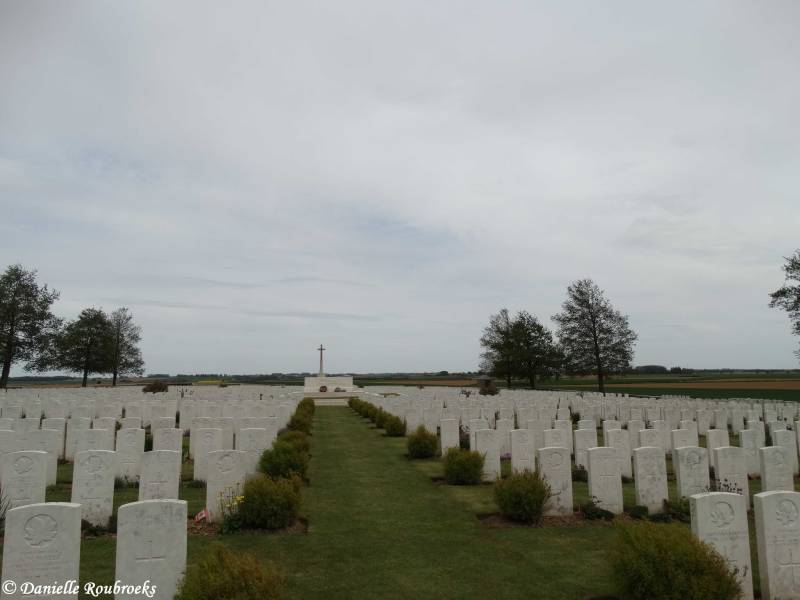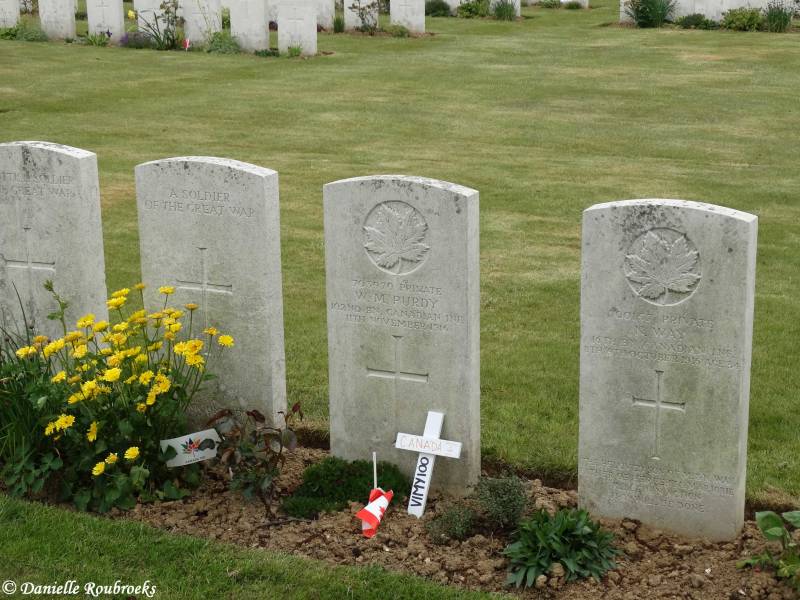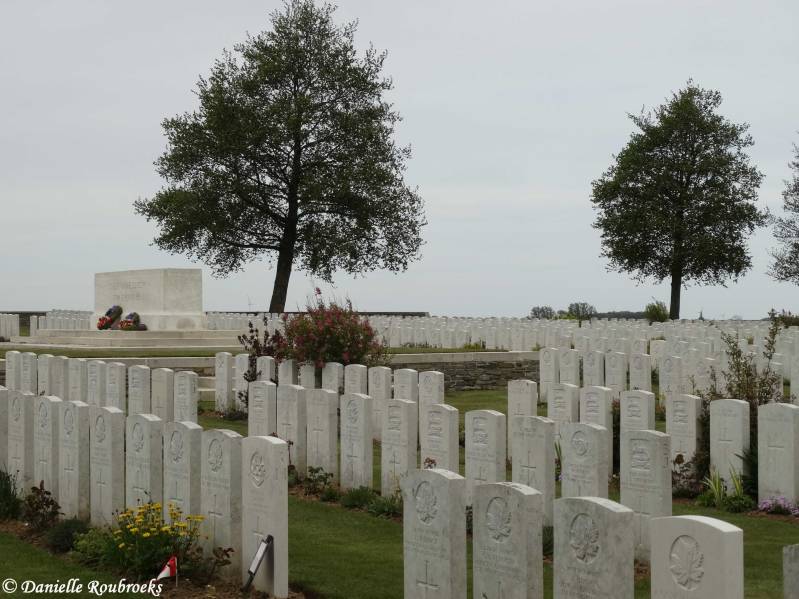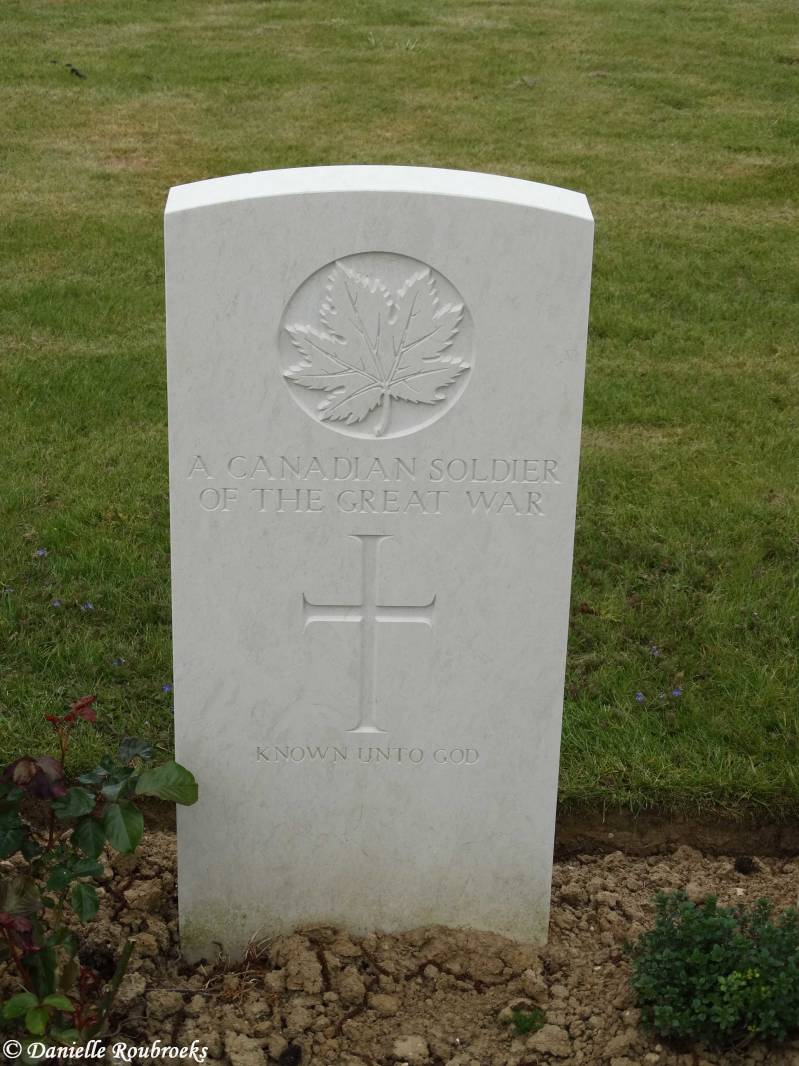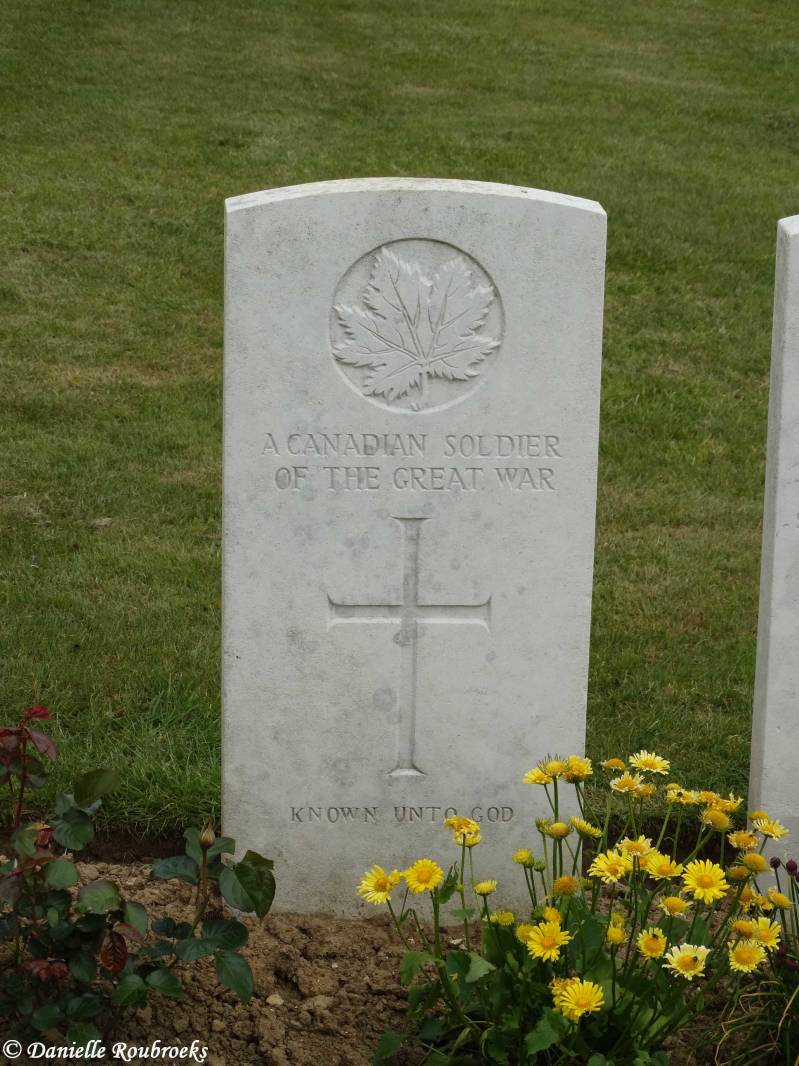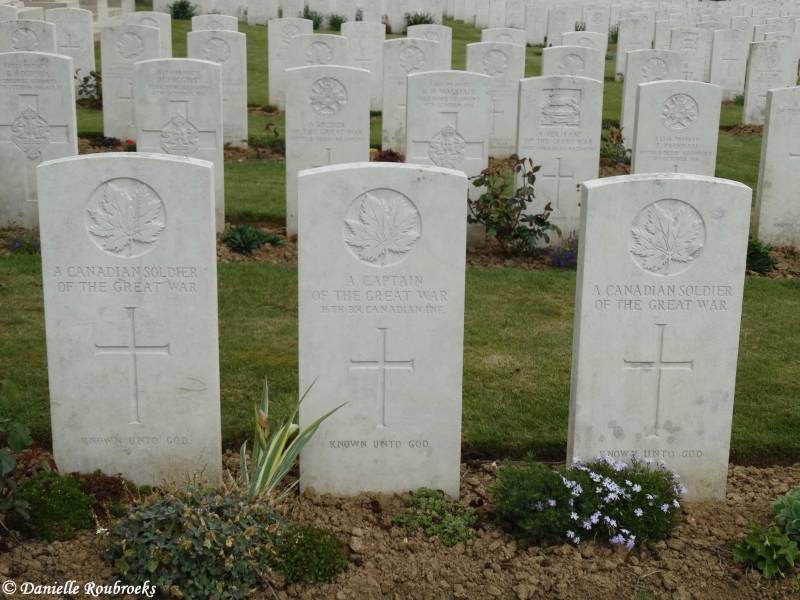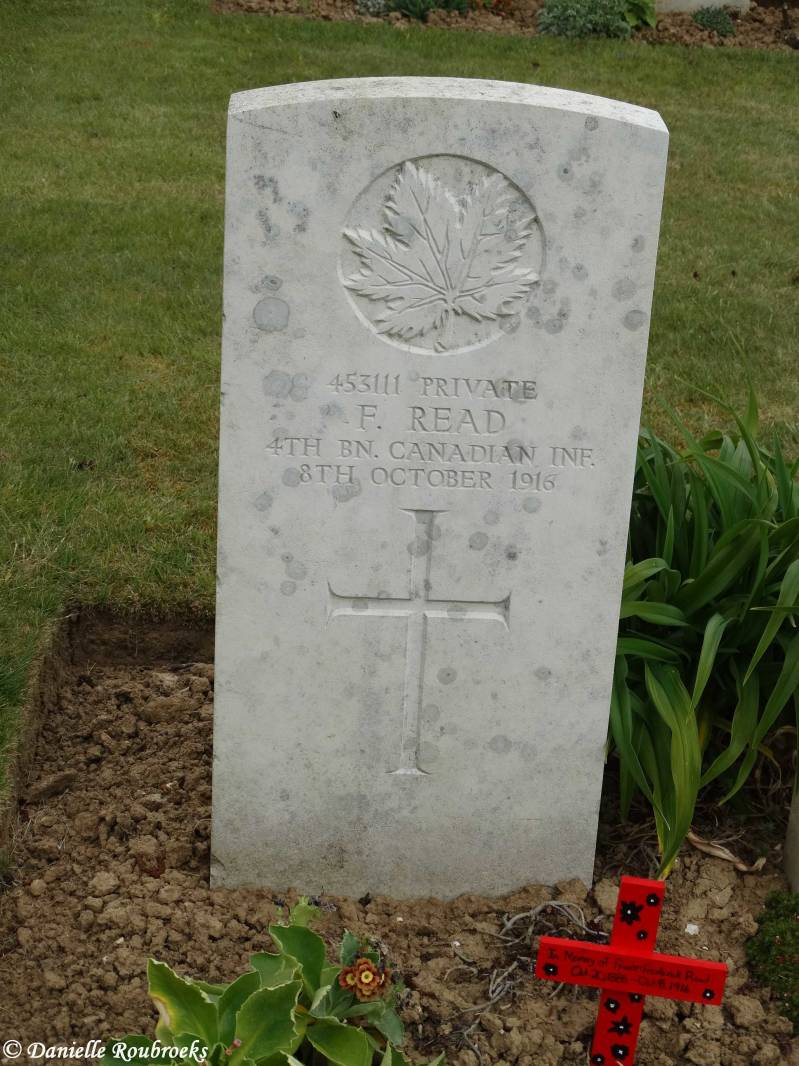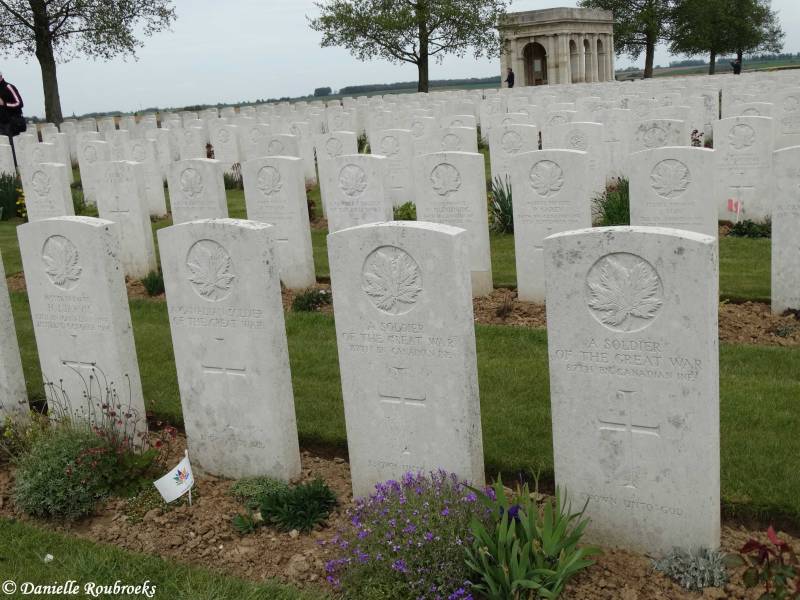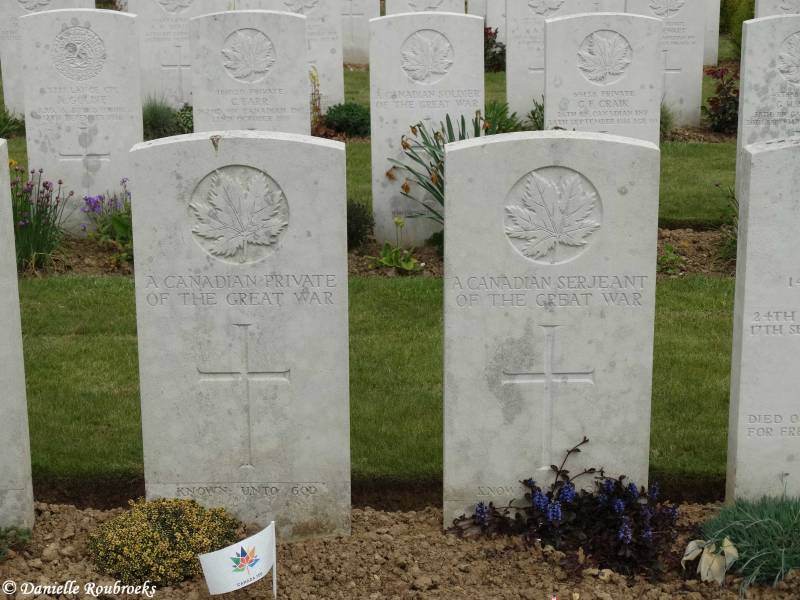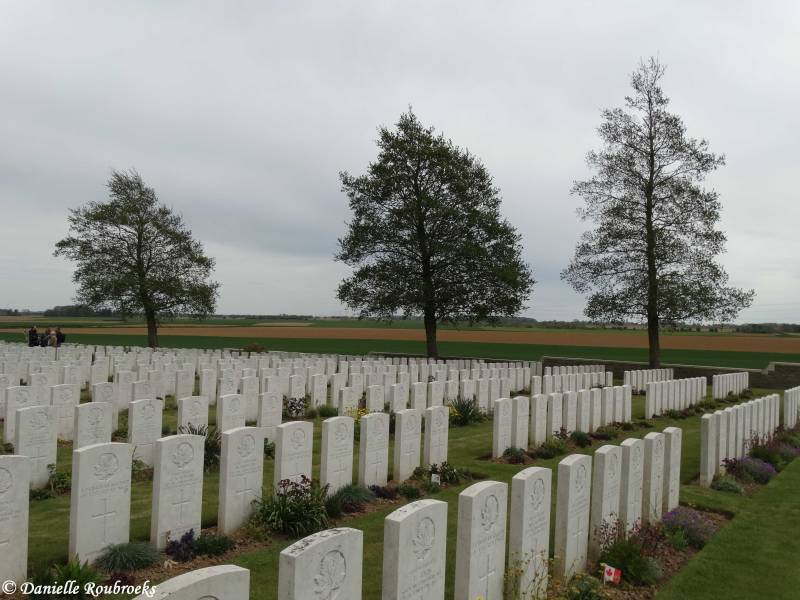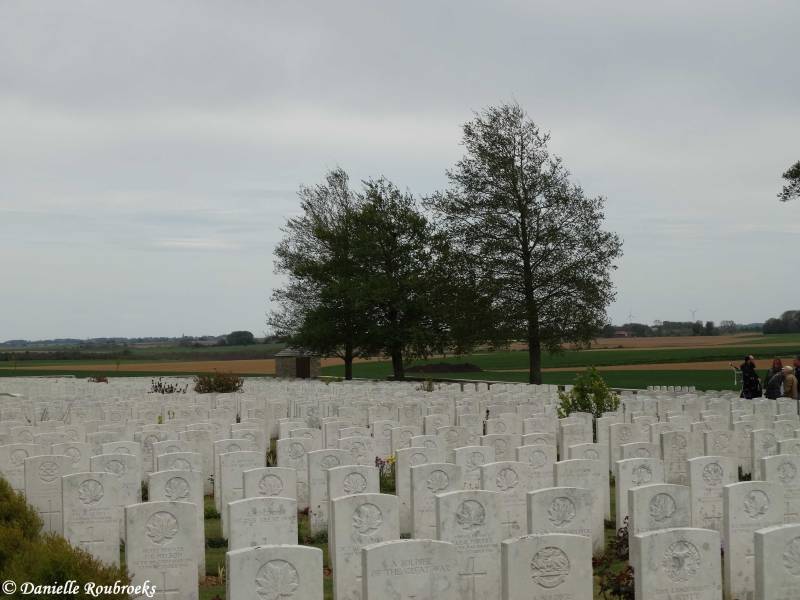Adanac Military Cemetery, Miraumont
Historical Information (Source: CWGC)
The villages of Miraumont and Pys were occupied on 24-25 February 1917 following the German withdrawal to the Hindenburg Line. They were retaken by the Germans on 25 March 1918, but recovered the 42nd (East Lancashire) Division on the following 24 August. Adanac Military Cemetery (the name was formed by reversing the name "Canada") was made after the Armistice when graves were brought in from the Canadian battlefields around Courcelette and small cemeteries surrounding Miraumont. One grave (Plot IV, Row B, Grave 30) was left in its original position.
There are now 3,187 Commonwealth burials and commemorations of the First World War in this cemetery. 1,709 of the burials are unidentified but special memorials commemorate 13 casualties known or believed to be buried among them. The cemetery was designed by Sir Herbert Baker.
Served with
- United Kingdom (822)
- Canadian (562)
- New Zealand (64)
- Australian (34)
Served in
- Army (1465)
- Navy (16)
- Air Force (1)
VICTORIA CROSS
Serjeant Samuel FORSYTH - 4/400 - No. 3 Field Coy. New Zealand Engineers
Died 24 August 1918 Age 25
Country of Service: New Zealand
Awards: Victoria Cross
Citation
An extract from "The London Gazette," No. 30967, dated 18th Oct., 1918, records the following:-"For most conspicuous bravery and devotion to duty in attack. On nearing the objective, his company came under heavy machine-gun fire. Through Serjt. Forsyth's dashing leadership and total disregard of danger, three machine-gun positions were rushed and the crews taken prisoner before they could inflict many casualties on our troops. During subsequent advance his company came under heavy fire from several machine guns, two of which he located by a daring reconnaissance. In his endeavour to gain support from a Tank, he was wounded, but after having the wound bandaged, he again got in touch with the Tank, which in the face of very heavy fire from machine guns and anti-Tank guns, he endeavoured to lead with magnificent coolness to a favourable position. The Tank, however, was put out of action. Serjt. Forsyth then organised the Tank crew and several of his men into a section, and led them to a position where the machine guns could be outflanked. Always under heavy fire, he directed them into positions which brought about a retirement of the enemy machine guns and enabled the advance to continue. This gallant N.C.O. was at that moment killed by a sniper. From the commencement of the attack until the time of his death Serjt. Forsyth's courage and coolness, combined with great power of initiative proved an invaluable incentive to all who were with him and he undoubtedly saved many casualties among his comrades."
Grave Reference: I. I. 39.
(Source: Wikipedia)
Private James Clelland RICHARDSON - 28930 - 16th Bn. Canadian Infantry
Died 09 October 1916 Age 20
Country of Service: Canadian
Awards: Victoria Cross
Citation
An extract from "The London Gazette," No. 30967, dated 18th Oct., 1918, records the following:-"For most conspicuous bravery and devotion to duty when, prior to attack, he obtained permission from his Commanding Officer to play his company "over the top".
As the Company approached the objective, it was held up by very strong wire and came under intense fire, which caused heavy casualties and demoralised the formation for the moment. Realising the situation, Piper Richardson strode up and down outside the wire, playing his pipes with the greatest coolness. The effect was instantaneous. Inspired by his splendid example, the company rushed the wire with such fury and determination that the obstacle was overcome and the position captured. Later,after participating in bombing operations, he was detailed to take back a wounded comrade and prisoners. After proceeding about 200 yards Piper Richardson remembered that he had left his pipes behind. Although strongly urged not to do so, he insisted on returning to recover his pipes. He has never been seen since, and death has been presumed accordingly owing to lapse of time."
Grave Reference: III. F. 36.
(Source: Wikipedia)



